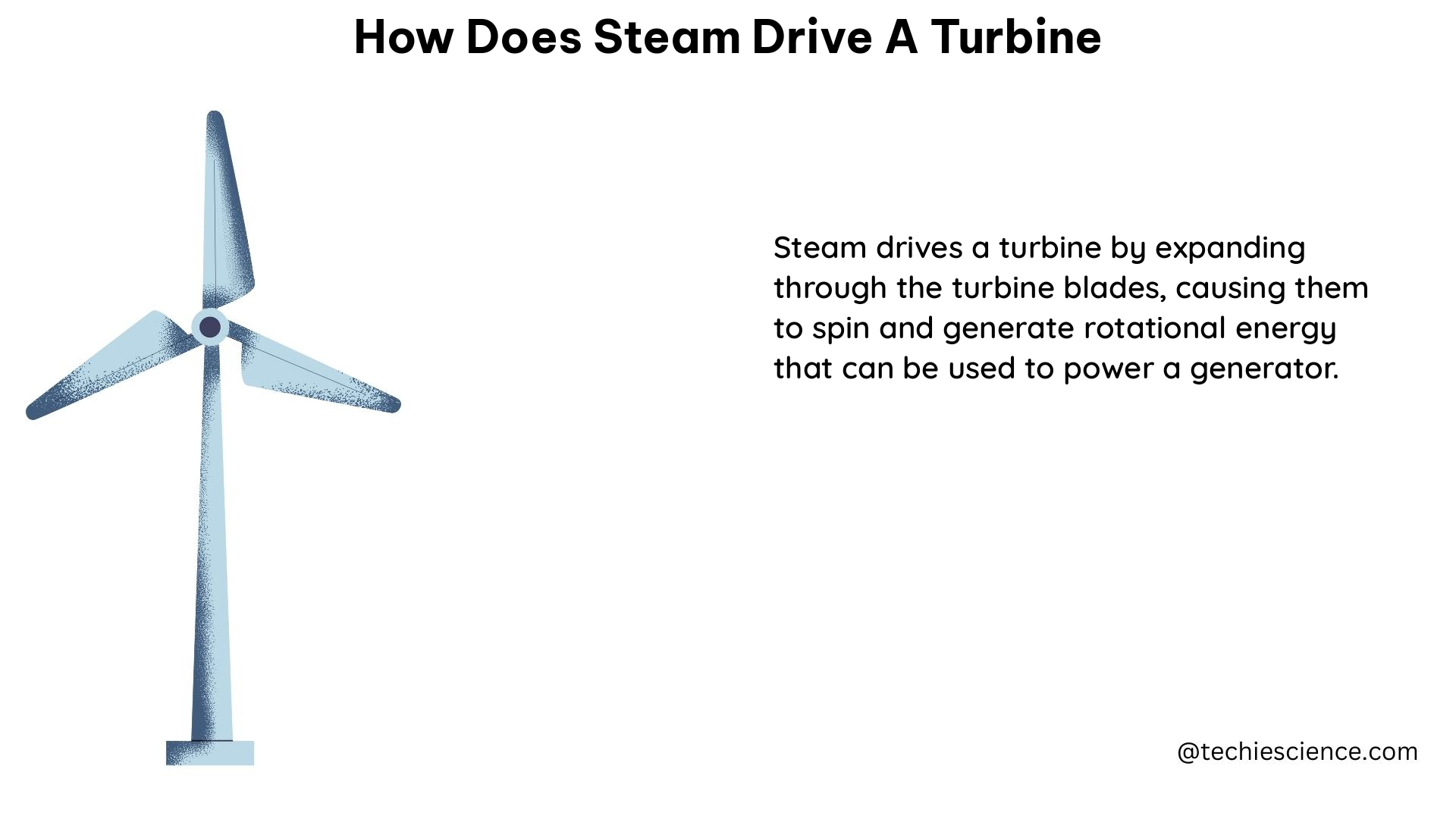Steam is a powerful force that has been harnessing energy for centuries, and one of the most efficient ways to convert steam’s energy into mechanical power is through the use of a steam turbine. In this comprehensive guide, we’ll delve into the intricate details of how steam drives a turbine, providing you with a wealth of technical information and practical insights.
The Principle of Steam Expansion
At the heart of the steam turbine’s operation is the principle of steam expansion. When steam is heated, its volume and pressure increase significantly. As the steam tries to occupy a larger space, it exerts a force on the turbine blades, causing them to rotate. This rotational motion is the foundation of the steam turbine’s power generation.
Quantifying the Steam Pressure Difference
The force exerted by the steam on the turbine blades can be precisely measured by calculating the pressure difference across the turbine. This pressure difference, combined with the flow rate of the steam, determines the power output of the turbine.
For example, a steam turbine with an inlet pressure of 1,000 psi (pounds per square inch) and an exhaust pressure of 100 psi, operating at a flow rate of 100,000 pounds per hour, would produce approximately 10,000 horsepower.
| Inlet Pressure | Exhaust Pressure | Flow Rate | Power Output |
|---|---|---|---|
| 1,000 psi | 100 psi | 100,000 lb/h | 10,000 hp |
It’s important to note that the pressure difference across the turbine is a critical factor in determining its efficiency and power output.
Isentropic Efficiency
The efficiency of a steam turbine can be quantified by measuring its isentropic efficiency. Isentropic efficiency is the ratio of the actual work done by the turbine to the maximum theoretical work that could be done. This metric is crucial in understanding the overall performance of the steam turbine.
Industrial steam turbines typically have isentropic efficiencies ranging from less than 25% to slightly over 80%. The higher the isentropic efficiency, the more effectively the turbine is converting the steam’s energy into mechanical power.
Steam Turbine Design Considerations

The design of a steam turbine is a complex and intricate process, with numerous factors to consider. Some of the key design elements include:
-
Blade Design: The shape, size, and arrangement of the turbine blades play a crucial role in the turbine’s efficiency and power output. Blade design optimization is a critical aspect of steam turbine engineering.
-
Rotor Design: The rotor, which is the rotating component of the turbine, must be designed to withstand the high-speed rotation and the forces exerted by the steam. Factors such as material selection, balancing, and vibration control are essential in rotor design.
-
Casing Design: The turbine casing, which houses the rotor and blades, must be designed to withstand the high-pressure and high-temperature environment. Proper casing design ensures the structural integrity of the turbine.
-
Sealing Systems: Effective sealing systems are crucial in minimizing steam leakage and maintaining the pressure differential across the turbine. Labyrinth seals, brush seals, and other advanced sealing technologies are employed in steam turbine design.
-
Cooling Systems: Steam turbines operate at high temperatures, and efficient cooling systems are necessary to maintain the integrity of the components and ensure reliable operation.
-
Control Systems: Advanced control systems are integrated into steam turbines to monitor and regulate various parameters, such as speed, load, and temperature, ensuring optimal performance and safety.
DIY Steam Turbine Projects
For those interested in hands-on exploration of steam turbine principles, building a small-scale steam engine can be a rewarding DIY project. One excellent example is the Integza YouTube channel, which provides detailed instructions and demonstrations on constructing a simple steam engine.
These DIY projects can help you gain a deeper understanding of how steam drives a turbine, allowing you to experiment with different design elements and observe the principles in action.
Conclusion
Steam turbines are marvels of engineering, harnessing the power of steam to generate mechanical energy. By understanding the principles of steam expansion, pressure differences, and isentropic efficiency, you can gain a comprehensive understanding of how steam drives a turbine. Whether you’re an engineer, a DIY enthusiast, or simply curious about the inner workings of these remarkable machines, this guide has provided you with a wealth of technical details and practical insights to explore the fascinating world of steam turbines.
References:
- Reddit ELI5 on How Steam Turns a Turbine
- Steam Rankine Cycle on ScienceDirect
- Steam Turbine Thermal Evaluation Assessment
- Steam Turbine on ScienceDirect
- Steam System Survey Guide
- Integza’s YouTube Channel

The lambdageeks.com Core SME Team is a group of experienced subject matter experts from diverse scientific and technical fields including Physics, Chemistry, Technology,Electronics & Electrical Engineering, Automotive, Mechanical Engineering. Our team collaborates to create high-quality, well-researched articles on a wide range of science and technology topics for the lambdageeks.com website.
All Our Senior SME are having more than 7 Years of experience in the respective fields . They are either Working Industry Professionals or assocaited With different Universities. Refer Our Authors Page to get to know About our Core SMEs.